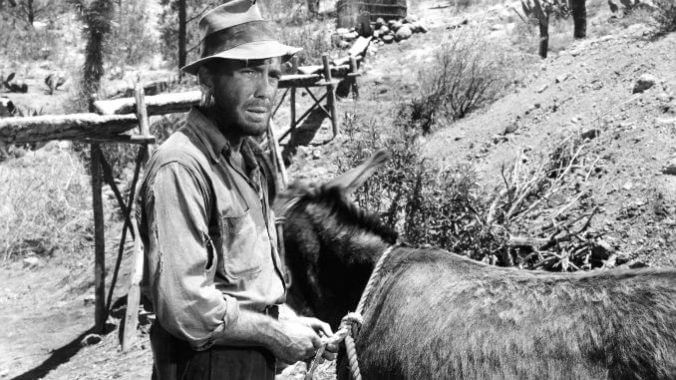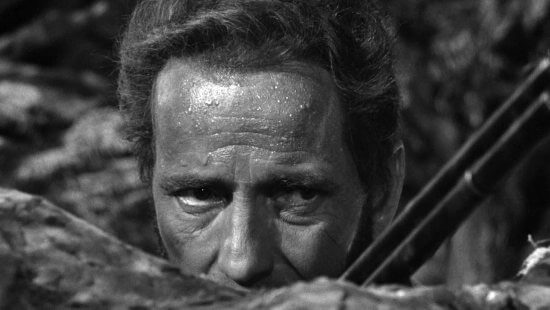In The Treasure of the Sierra Madre, Bogie Broke Bad
The post-war noir Western is 75, but its statements on greed are timeless.

There’s a thrill in seeing an actor you’ve come to associate with gentle kindness or sterling heroism play a complete heel. The soft-spoken Albert Brooks is about two-thirds of the reason you should watch Drive. Henry Fonda’s leering killer Frank makes Once Upon a Time in the West unforgettable. People lost their minds over Nicole Kidman in Snow White and the Huntsman, or Angelina Jolie as Maleficent. Even Jet Li seems like he’s having more fun when he’s being a villain (and nobody’s bitch). All of them have the range to pull it off, no doubt, but it feels transgressive precisely because, most of the time, their on-screen personas are heroic or sympathetic roles.
Part of what makes The Treasure of the Sierra Madre a cut above its pulp plot is that it’s got another great heel turn: Humphrey Bogart’s Dobbs. The difference is in how the ratty, desperate, manic vagrant-turned-prospector somehow seems like it fits Bogey like a glove. There’s rarely been an actor since who plays wounded as well as Hollywood’s most distinctive leading man of 1948. The Treasure of the Sierra Madre was a chance for the actor who had already given the world antiheroes like Casablanca’s Rick Blaine and The Maltese Falcon’s Sam Spade to become a character whose flaws actually sink him for good. He looks gritty and gaunt and miserable the whole picture, and you wonder how the studio was convinced to sign off on it.

In the 1920s in Tampico, Mexico, an American, Dobbs (Bogart), has lost everything and is bumming around on the streets, begging fellow Americans for pocket change. He eventually falls in with Curtin (Western B-movie stalwart Tim Holt), and the two take on a grueling job offered by a slick-talking American that sees them loaded on a boat to go out to oil platforms. The man swears up and down that he’ll pay them, then vanishes. Curtin and Dobbs eventually stumble across him. The stiffed workers get their money, and their former boss gets an infamous mention in the greatest beatdowns in cinema history.
The two sleep off their hard-fought earnings in a seedy flophouse alongside an old prospector, Howard (Walter Huston, director John Huston’s father, and an actor known for playing everything from a terrifyingly earnest fascist dictator to the devil himself). The wheel of fortune has turned many times for the old tramp, but the two younger men decide that his stories of prospecting for gold are worth a shot. After all, with his forewarnings about how greed destroys men, they couldn’t possibly fall prey to it. Right?
The trio scrape together the money they have and head into the wilds of Mexico to seek gold. If the movie looks rough and wild, if the actors look sun-baked and exhausted, it’s because it was actually shot on location in Mexico, one of the first Hollywood films ever to do so. You might think, as you watch this, that actual Latino actors portraying the characters, Huston speaking pretty decent Spanish (he learned phonetically, following the lead of a dialogue coach) and a fairly respectful portrayal of the local culture are pretty refreshing for a 1948 film! Consider then, that because it was coming off of World War II, the United States had a very deferential policy toward Mexico in the interest of promoting good relations with Central and South America, a policy upheld even by the likes of Donald Duck.
After dragging ass through the wilderness for days and days, the boys strike gold. If you’ve ever wondered where the stereotypes of the crazed, knee-slappin’, dancin’ prospector who’s struck GOLD, GOLD, GOLD!!! come from, well, it was Walter Huston in this movie.
-

-

-

-

-

-

-

-

-

-

-

-

-

-

-

-

-

-

-

-

-

-

-

-

-

-

-

-

-

-

-

-

-

-

-

-

-

-

-

-








































